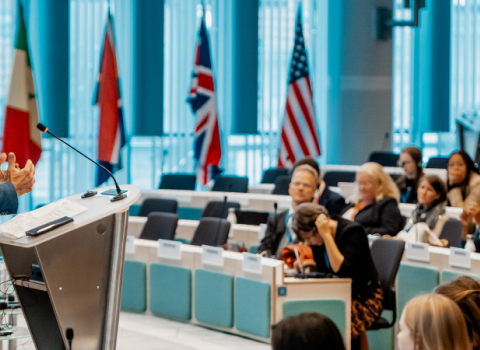Five years on from the launch of Plan S, global pressure for equitable, open and transparent scientific publishing is gathering a fresh head of steam

A new push for a more equitable scientific publishing system is in the making as the proponents of ‘diamond’ open access - under which neither authors or readers would pay the publishers – weigh up joining forces in a global federation.
The idea for a federation was first proposed last month when researchers, policymakers, publishers and research funders gathered at the Global Summit on Diamond Open Access in Mexico.
For a week, they discussed how to best support the fragile and thinly distributed diamond open access ecosystem. By the end of the summit, UNESCO representatives had given the impromptu plan to form a federation their backing. “We had no clear expectations this was going to be the outcome,” says Lidia Borrell-Damian, secretary general of Science Europe, the body representing national funding agencies and one of the organisers of the summit.
She fully supports the project. “This is an important sector that needs to be sustained. Moreover, it has to be reinforced, enhanced and, ideally, expanded,” says Borrell-Damian.
Alongside this move, a wider movement for speeding up the transition to open access scientific publishing is gathering pace. A week after the spontaneous plan came about, the group of leading research funding agencies in cOAlition S announced a draft plan for a more equitable and faster open access publishing ecosystem.
This envisions a scholar-led system in which each author decides where and when to publish their work. And what gets published not be limited to scientific articles, with cOAlition S calling on authors to make all research outputs freely available, including earlier versions of articles and associated peer review reports.
The plan comes five years after the group backed Plan S, which called for papers resulting from taxpayer-funded research be free to read at the point of publication. Plan S is seen as a success, but there’s more work to be done revamping the system.
One spanner in the works has been the rapid rise in article processing charges fees levied on authors to publish in open access journals. One report has suggested publishers make as much as $2 billion per year from APCs.
Despite this, there is plenty to build on in the renewed push for open access. This spring, EU research ministers called for a crack down on the unsustainable author fees that undermine the objective of making research results free to access.
A new type of relationship
In an open access world, the Coalition envisions, researchers should have full say over where and when to share their work.
This would necessitate a shift in their relationship with publishers. The latter should provide publishing services and make service-related decisions, but scholars would be in charge of all content-related matters, says Johan Rooryck, executive director of cOAlition S.
“We want to establish a new partnership with service providers, where they provide services – such as facilitating peer review, publication and preservation - for the research community and indeed can monetise these,” Rooryck said.
The research community supports that idea. ALLEA, the European Federation of Academies of Sciences and Humanities, has long advocated for the transition to open access to serve the interests of researchers and civic society. It sees the proposal as a step in the right direction, putting researchers back in control.
This was always the ambition but over the last few years, the skyrocketing cost of APCs has put a huge strain of funders’ pockets.
Luke Drury, vice president of ALLEA, says, “This transition has been challenging and experience has shown that it can have unintended negative effects – mostly consequences of the increased monetisation of academic publishing by commercial entities, and of outdated research assessment practices that prioritise traditional journal articles, quantity over quality, and impact over excellence.”
Universities are also on board. Stephane Berghmans, director for R&I at the European University Association (EUA), says the association supports the efforts for institutions and academics to regain academic ownership of the publishing ecosystem.
He highlights the need for bibliodiversity in the system, which he says is key to develop a scholarly publication system that is transparent, diverse, affordable, sustainable. “All of these are in line with the current initiative from cOAlition S,” says Berghmans.
Publishers are on board with putting authors at the forefront of the process but say they need governments and funders to initiate changes in the system.
Stephan Kuster, head of public affairs at open access publisher Frontiers, says, “We embrace an approach that places author choice at the forefront of decision-making, but funders and governments will have to expand that choice for all forms of truly open access, beyond today's confines."
Kuster hopes to see research projects cover publishing costs for authors, thus allowing them to choose where they want to publish.
The spokeswoman of Taylor and Francis, one of the four major scientific publishers, did not comment on the proposal itself but said the company already offers authors “a wide range of different publishing choices.”
What happens next, Borrell-Damian says, could be a turning point for open access publishing. “The policies of Plan S have already been successful. They can continue, and they can be reinforced, along with new plans of cOAlition S and what we’re proposing in terms of diamond open access.”





 A unique international forum for public research organisations and companies to connect their external engagement with strategic interests around their R&D system.
A unique international forum for public research organisations and companies to connect their external engagement with strategic interests around their R&D system.